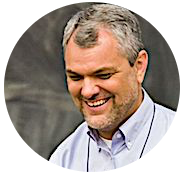the giddy geek
- June 11, 2008
- By Dale McGowan
- In Science, wonder
 16
16
We live in a universe made of a curved fabric woven of space and time in which hydrogen, given the proper conditions, eventually evolves into Yo Yo Ma. — from Parenting Beyond Belief

Last year I wrote about Major Tom and the way the Apollo program lit up my imagination and fueled my wonder in the 70s. I always shook my head in pity at anyone who shook his head in pity at the “coldness” and “sterility” of the scientific worldview.
I touched on this in one of my essays in Parenting Beyond Belief called “Teaching Kids to Yawn at Counterfeit Wonder”:
Religious wonder—the wonder we’re said to be missing out on—is counterfeit wonder. As each complex and awe-inspiring explanation of reality takes the place of “God did it,” the flush of real awe quickly overwhelms the memory of whatever it was we considered so wondrous in religious mythology. Most of the truly wonder-inducing aspects of our existence—the true size and age of the universe, the relatedness of all life, microscopic worlds, and more—are not, to paraphrase Hamlet, even dreamt of in our religions. Our new maturity brings with it some real challenges, of course, but it also brings astonishing wonder beyond the imaginings of our infancy.
I offered a short list of the kinds of scientific revelations that make me woozy with awe:
If you condense the history of the universe to a single year, humans would appear on December 31st at 10:30 pm. That means 99.98 percent of the history of the universe happened before humans even existed.
Look at a gold ring. As the core collapsed in a dying star, a gravity wave collapsed inward with it. As it did so, it slammed into the thundering sound wave heading out of the collapse. In that moment, as a star died, the gold in that ring was formed.
We are star material that knows it exists.
Our planet is spinning at 900 miles an hour beneath our feet while coursing through space at 68,400 miles per hour.
The continents are moving under our feet at 3 to 6 inches a year. But a snail’s pace for a million millennia has been enough to remake the face of the world several times over, build the Himalayas and create the oceans.
Through the wonder of DNA, you are literally half your mom and half your dad.
A complete blueprint to build you exists in each and every cell of your body.
The faster you go, the slower time moves.
Your memories, your knowledge, even your identity and sense of self exist entirely in the form of a constantly recomposed electrochemical symphony playing in your head.
All life on Earth is directly related by descent. You are a cousin not just of apes, but of the sequoia and the amoeba, of mosses and butterflies and blue whales.
Now that, my friends, is wonder.
I’ve tried to pay attention when geeks (a term of genuine endearment from me) of one stripe or another are enraptured at the poetry or wonder of something I can’t see. I know they are experiencing something transcendent, something that I lack the language or knowledge to apprehend directly.
I remember a student of mine, a math major/violist, walking into a rehearsal with a look of utter bliss, as if drunk on a mantra.
“What on Earth happened to you?” I asked.
“Laplace transforms,” she said. “Laplace transforms happened to me. They are so beautiful I can hardly stand it.”
I knew she was right, and that I would never know why. I was envious.
So imagine the fellow-feeling I felt when I saw this wonderful video by Phil Plait at Bad Astronomy. Next time someone starts into the drone about the cold, passionless world of science, show them this:
The awe-inspiring picture isn’t even my main point — it’s what the picture has done to Phil, someone who knows what it means, and better still, takes the time to share his amazement with the rest of us. Thanks, Phil!
[Thanks to Tim Mills at Friendly Humanist for leading me to this video.]



